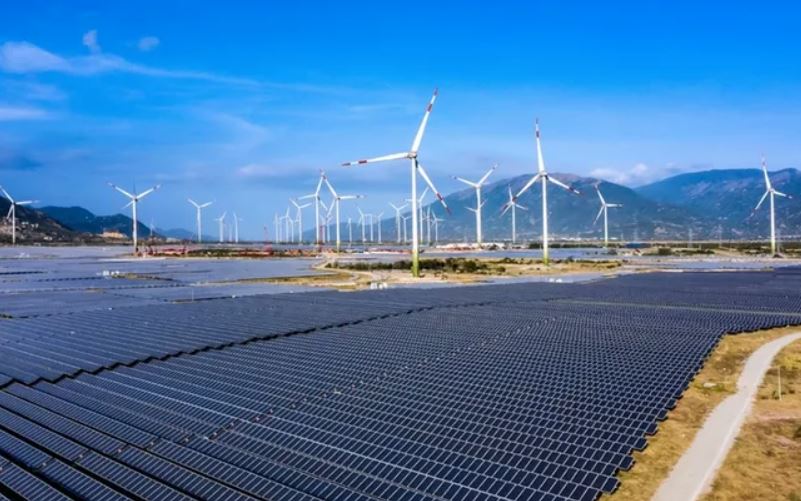Significant increase in clean energy, promoting electricity exports
The Ministry of Industry and Trade has just issued the Implementation Plan for the National Power Development Master Plan for the 2021–2030 period, with a vision to 2050 (referred to as the Implementation Plan for the Revised Power Development Plan VIII).
According to the plan, by 2030, Vietnam’s total installed capacity of LNG thermal power will reach 22,524MW, domestic gas-fired thermal power 14,930MW, coal-fired power 31,055MW, hydropower 33,294 – 34,667MW, solar power 46,459 – 73,416MW, and onshore wind power 26,066 – 38,029MW.
Offshore wind power for domestic consumption is targeted to reach 6,000MW by 2030 and increase to 17,032MW by 2035.
The two Ninh Thuan nuclear power plants (Ninh Thuan 1 and 2), each with a capacity ranging from 2,000 to 3,200MW, are scheduled to be operational during the 2030–2035 period.
Additionally, biomass, waste-to-energy, and excess heat from industrial processes are also encouraged, with biomass energy projected at 1,523 – 2,699MW, and waste-to-energy (from solid waste) at 1,441 – 2,137MW.
By 2030, the total capacity of energy storage batteries is expected to reach approximately 10,000 – 16,300 MW. The development of centralized solar power must be combined with storage battery installation at a minimum of 10% of the power capacity, with at least 2 hours of storage.

By 2030, Vietnam’s solar power capacity is expected to range from 46,459 to 73,416MW.
Notably, the implementation plan also clearly defines strategic directions related to electricity import and export within the ASEAN region and the Greater Mekong Subregion.
Accordingly, Vietnam will strongly promote electricity imports from countries with large hydropower potential. By 2030, the total imported capacity from Laos is expected to reach about 9,360 – 12,100MW; and optimizing the power imports from China with reasonable scale, depending on connection conditions. If favorable conditions and reasonable prices are met, the scale of imports from Laos to Northern Vietnam could be expanded or accelerated.
On the other hand, electricity export is also identified as a new strategic pillar in regional economic cooperation. By 2030, Vietnam aims to increase its electricity export to Cambodia to about 400MW.
By 2035, electricity export capacity to potential markets such as Singapore, Malaysia, and other regional partners could reach 5,000 – 10,000MW, and maintain a minimum scale of 10,000MW by 2050. This export volume may be adjusted upward depending on the actual demand of importing countries, based on principles of economic efficiency, national energy security, and national defense and security.
To support electricity export and new energy production, the Ministry of Industry and Trade has clearly identified potential regions, including the Central and Southern regions, with an export capacity ranging from 5,000MW to 10,000MW.
A "huge" funding need of over 136 billion USD
A notable new highlight is that the Ministry of Industry and Trade proposes to develop two interregional industrial and service centers for renewable energy in the North (Hai Phong, Quang Ninh, Thai Binh...) and the South Central - Southern regions (Ninh Thuan, Binh Thuan, Ho Chi Minh City...).
These centers will integrate equipment manufacturing, research and training, and logistics and services, thereby forming a complete value chain and enhancing Vietnam’s competitiveness on the global renewable energy map.
In the social welfare sector, the plan aims to provide electricity to over 911,000 households in rural, mountainous, and island areas, raising the electricity access rate to nearly 100%. At the same time, over 2,478 pumping stations in the Mekong Delta will also be supplied with stable electricity for agricultural production.
According to the plan, the total investment capital demand for power source and grid development for the 2025 – 2030 period is about VND 3.3 million billion (USD over 136 billion), with nearly 30% coming from state capital, and the rest from socialized sources. For the 2031 – 2035 period, an additional VND 3.1 million billion (USD over 130 billion) will be required.
Translator: Vân Ly
Share